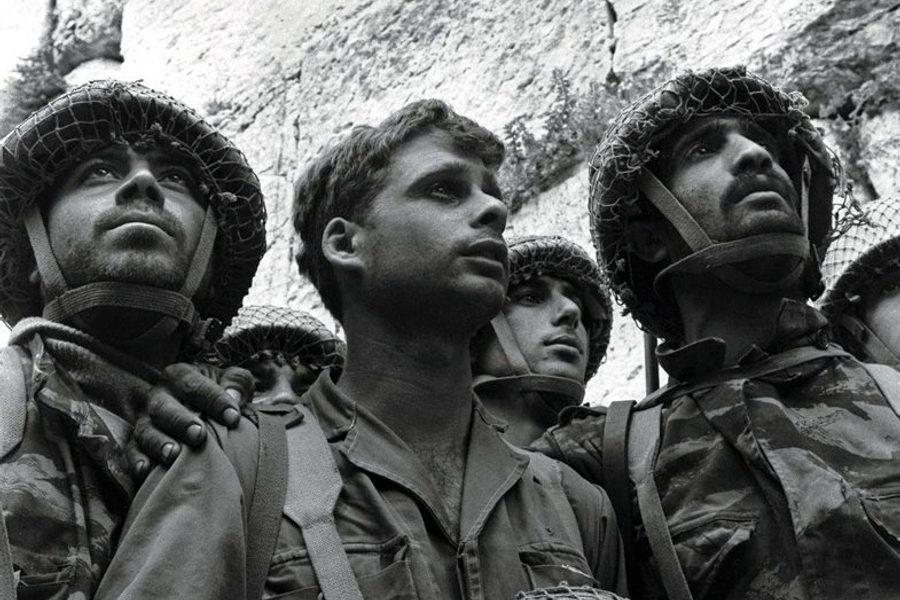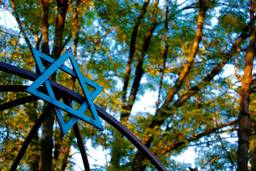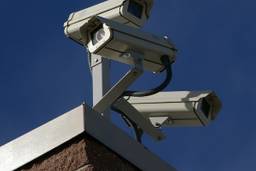Unintended Conquerors
Yossi Klein Halevi’s new book Like Dreamers speaks with rare clarity on the Israel-Palestine conflict.
Louis Nayman

Shortly after 9:15 a.m. on June 7, 1967, reservists of the Israel Defense Forces 55th Paratroopers Reserve Brigade became the first soldiers of a sovereign Jewish state to enter the Old City of Jerusalem, the historic and Biblical capital of the Jewish people, in nearly 20 centuries. The ceasefire that ended Israel’s 1948 War of Independence had left Jerusalem’s Old City under the Jordanian army’s control, and many religious Jews with strong feelings that the promise of redemption had not yet been fulfilled.
The night before, the unit had sustained high casualties in hand-to-hand fighting against Jordanian Army infantry in the surrounding hillsides. Israeli Defense Minister Moshe Dayan questioned whether modern Israel even needed what he dismissively called “this Vatican,” but ultimately relented to the pressure of Israel’s Chief Rabbi and the political Right. However, the conquest was easier than anticipated: Unknown to the IDF, Jordanian forces had slipped away under cover of night, so when approval came that Wednesday morning to take the Old City, soldiers of the 55th broke through the Lion’s Gate and reached the Temple Mount and Western Wall in short order. In a scene eerily foreshadowing the triumphal image 36 years later of an American soldier draping the stars and stripes across a statue of Saddam Hussein, someone fastened an Israeli flag atop the Dome of the Rock — Islam’s third holiest site — prompting an appalled Dayan to order it taken down immediately.
Over the course what became known as the Six Day War, the territory under Israeli control tripled, its borders expanded to the banks of the River Jordan, the Suez Canal and the heights of Golan, encompassing not only all of Jerusalem, but the holy historical sites of Hebron, Jericho and Bethlehem. What had begun as a defensive war for national existence had ended in an occupation of conquest.
The consequences of that transformation over the next five decades are vividly, and at times heartbreakingly, recounted in American-born Israeli journalist Yossi Klein Halevi’s excellent and exquisitely written new book, Like Dreamers: The Story of The Israeli Paratroopers Who Reunited Jerusalem and Divided a Nation. Through the intertwining personal histories of seven reservists of the 55th Brigade— who range from pork-eating, Yom Kippur-breaking kibbutzniks to kashrus-observing, kippot-wearing seminarians — Halevi provides a comprehensive, insightful and richly accessible portrayal of the competing utopian visions of modern Zionism: one secular, the other messianic. Understanding these competing visions is central to finding a just and enduring resolution to the competing claims dividing what both Arabs and Jews call the Holy Land.
To kibbutzniks, the founding elite of the modern Jewish state, Stalin-era Red Army songs came more easily than the most elementary Hebraic prayers. They believed the aim of Zionism was to build a democratic socialist country in the ancient Jewish homeland that would claim its place among the other sovereign secular democracies of the world, a nation among nations.
Religious Zionists, not interested in building what Halevi characterizes as “another Belgium,” sought to create a Jewish state that remained true to Biblical prophecy and borders, included the holy sites of Jerusalem, Jericho and Hebron, observed Jehovah’s rituals and commandments, and served as a beacon and moral example to all the nations. Halevi quotes a 21-year-old seminarian and corporal exclaiming at the liberation of the Temple Mount, “Two thousand years of exile are over.” Another tells an officer, “We are writing the next chapter of the Bible.”
But with the unfolding of events — the Yom Kippur War; the founding, expansion, and dismantling of settlements; the incursion into Lebanon; the Camp David and Oslo Accords; the Rabin assassination; the massacre at the Mosque of Abraham; successive intifadas and failure to reach agreement at the second Camp David meeting in 2000 — worldviews change, as did the former paratroopers who held them. In following the stories of these paratroopers and their comrades, Halevi masterfully demonstrates the fluidity, complexities, inconsistencies and contradictions that propel national, cultural and geopolitical, as well as personal, history. Of the seven paratroopers:
Two kibbutzniks — Meir Ariel, who becomes a rock musician and Avital Geva, who earns international acclaim as a conceptual artist — were involved in founding Peace Now, the political movement dedicated to ending the occupation and reaching a just two-state solution with the Palestinians. Brought up in secular socialist kibbutzim where the kitchens weren’t kosher and the Sabbath was just another work day, Ariel and Geva in middle age separately come to embrace ritual prayer and the Study of Torah.
Arik Achmon, the brigade’s intelligence officer and the son-in-law of the founder of the leading left-wing kibbutz movement becomes a corporate executive, union buster and influential proponent of unilateral withdrawal from Gaza, while at the same time favoring construction of a security barrier separating most of the West Bank and Gaza from Israel proper, concluding that for Israel, ending the occupation is a more urgent priority than making peace.
Yoel Bin-Nun, former seminarian and corporal in the paratroopers, who becomes a rabbi, teacher, and founder of two settlements beyond Israel’s 1967 borders, similarly concludes when “confronted with the unbearable choice between preserving the intactness of the people of Israel and the intactness of the land of Israel,” the Jewish hierarchy of values places people first, then Torah and then land. Anguished by the religious Right’s growing participation in, and tolerance for, violence against other Israelis and Israeli institutions, he quits the settlement he founded, and at the age of 58, votes Labor for the first time in his life.
Yisrael Harel, the only non-sabra of the seven, is a child refugee of the Shoah who, as a leader and top organizer of the settler movement, goes on to meet clandestinely with PLO representatives in an effort to find a framework for agreement on Palestinian sovereignty that preserves established Jewish settlements. Harel’s colleague Hanan Porat, also a former seminarian, becomes the first West Bank settler to win election to the Knesset as a strong proponent of expanded settlement by both legal and extralegal means. When during the elections of 1992 hard Right parties attack Labor Prime Minister candidate Yitzhak Rabin for suffering an emotional breakdown on the eve of the 1973 Yom Kippur war, Hanan Porat publically comes to the defense of his former commander.
Former kibbutznik and paratrooper Udi Adiv becomes increasingly estranged from what he comes to see as “Zionist imperialism” and “the fiction of progressive Zionism.” While a left-wing radical at the University of Haifa, he asks an Israeli Palestinian to put him in touch with the PLO. Ultimately, Adiv becomes involved with a Syrian sponsored anti-Zionist terror network. Arrested in Israel three months following the massacre of Israeli Olympic athletes in Munich, he is convicted of espionage and sentenced to 17 years in prison. While imprisoned Adiv asks to be confined with the Arab prisoners, but grows disillusioned when they exhibit more solidarity with nationhood and Islam than with class. He is returned by request to the general prison population, comprised mostly of Sephardic poor and working-class Jews. Released after serving 12 years, he tours the destroyed Arab village on whose land his own kibbutz expanded and thinks, “Every nation carries its legacy of injustice… . To correct the injustices of the past meant imposing new injustices.” Nearly two decades following his arrest, one of his former interrogators casually tells him during a chance encounter that “all of us” — meaning the intelligence service— “are in favor of an agreement with the Palestinians.” The kibbutznik takes it as a vindication of sorts.
None of these lives played out neatly. Some bent toward behavior and ideologies they never would have imagined, others experimented with various philosophies and careers, while others pressed the limits of messianic certainty. In them, we see that progress marches not so much in a straight dialectic as rambles in gradual zigs, abrupt zags, and occasional reverses — something Hegel and Marx and Yeats never quite got.
Halevi’s narrative includes a number of tactical and strategic lessons for contemporary progressives seeking justice for Palestinians. Boycott, Divesture and Sanctions proponents might remember that the most powerful consequence of the 1975 United Nations “Zionism is racism” resolution, was to incense Israelis and sway Israeli public opinion to support — or at least not oppose — the expansion of settlements in Judea and Samaria. Arafat’s last minute hardening of position and retreat from an agreement at the 2000 Camp David talks, under which Israel would have withdrawn from more than 90 percent of the West Bank and would have established a Palestinian capital in East Jerusalem, led to the resumption of the intifada and the surprise election months later of hardliner Ariel Sharon as prime minister, thereby prolonging the misery of occupation and postponing indefinitely the prospects for establishing a two-state solution and the redress of Palestinian grievances.
Yossi Klein Halevi’s eye for detail and character, and ear for complexity and nuance, create an authoritative narrative with the intensity and sweep of an epic novel. From now on, no understanding of the history and currents shaping the prospects for a just peace between Israelis and Palestinians will be complete without Halevi’s remarkable and compelling book.







